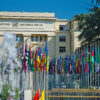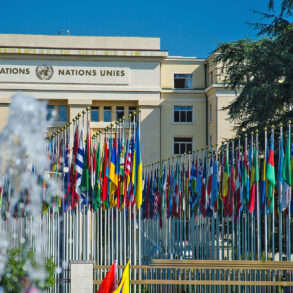The UN cultural organisation UNESCO added Arabic calligraphy to its list of “intangible cultural heritage of humanity” on 14 December 2021, among other traditions and practices.
Photo: Rebecca Erol, Alma Stock Photo
According to UNESCO, intangible cultural heritage includes living traditions in the fields of dance, theatre, music, oral traditions, natural knowledge and craft techniques. Since 2003, UNESCO has supported the protection, documentation and preservation of these cultural forms. To date, 180 states have acceded to the UNESCO Convention for the Preservation of these Cultural Traditions and Practices. Germany has been a State Party since 2013.
Arabic calligraphy is the artistic practice of writing the Arabic script in a flowing manner to convey harmony, grace and beauty. The practice, which can be passed on through formal and informal education, uses the twenty-eight letters of the Arabic alphabet written in cursive from right to left.
The recognition follows a petition by 16 Arab countries led by Saudi Arabia. The kingdom declared 2020 and 2021 as “Years of Arabic Calligraphy.” Riyadh’s Minister of Culture Prince Badr Bin Abdullah Bin Farhan commented: “We welcome the inclusion of Arabic calligraphy, which is the result of the Kingdom’s efforts to preserve this treasure of authentic Arab culture.” This art form remains alive and extremely popular. It is not only calligraphers themselves, Bin Farhan said, who make use of it. It has also found its way into painting, sculpture and graffiti.
According to a specialised medium on the internet, this art form began with the first writing of the Qur’an by Zaid ibn Thabita during the caliphate of ‘Uthman ibn ‘Affan. This copy was recorded in the Jazm style of writing, which is a precursor to the Kufi style. Originally used to make writing clear and legible, it gradually became an Islamic Arabic art for traditional and modern works. The script form became more complicated as artists found that they could create unique motifs by using different shapes of letters. The form has evolved as artists have used different mediums to create calligraphy, including honey, black soot, saffron and even spray paint.
Newly included cultural properties on the UNESCO list, which are also cultivated in the Muslim world, include hunting with falcons (falconry) and Palestinian embroidery.











